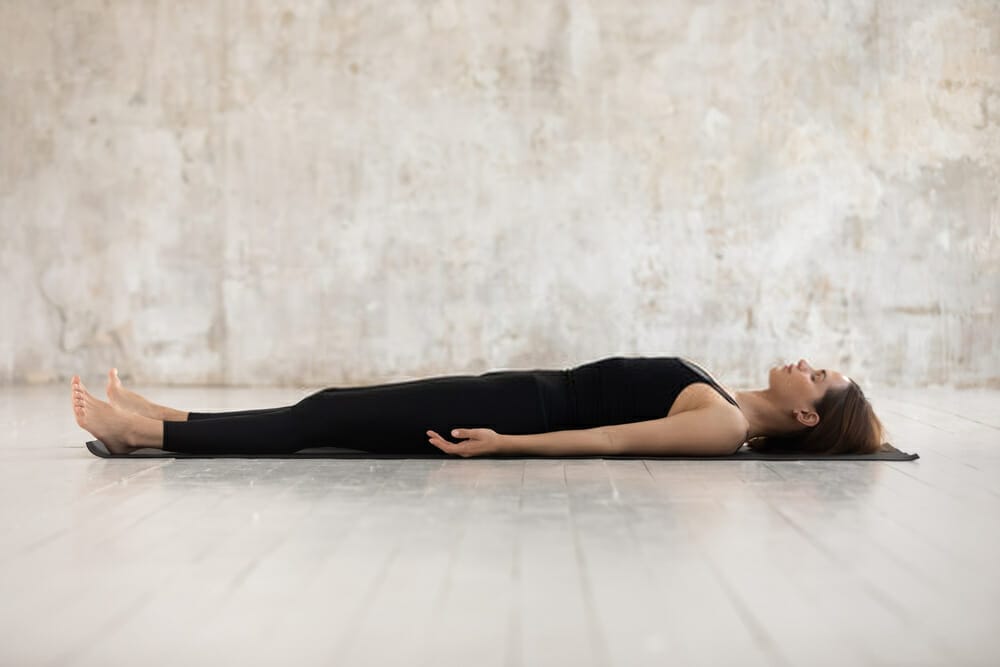You Should Try These Yoga Poses If You Have Vertigo
You’ve likely tried a lot of different things to cure your vertigo, but nothing seems to be working. Quite frustrating, right? People suffering from vertigo will agree to it.
If you are feeling this way, then you should try yoga instead.
Yoga is an ancient practice that will help relieve your Dizziness and Nausea through relaxation, breathwork, meditation, and deep stretches, which can also help ease pain in other parts of your body while correcting imbalances in muscle tensions.
Yoga will also help you focus your mind and see things clearly, which can help ease the symptoms of vertigo.
Let’s get started!
What is Vertigo?
Vertigo is a condition where the inner ear senses imbalance in three-dimensional space. As a result, there may be a spinning sensation, Nausea, and Loss of balance that can lead to Dizziness and poor hearing.
Vertigo can occur in the head or neck region, but you commonly experience a whirling sensation in the head.
Symptoms include:
- Feeling like the room is spinning.
- Lightheadedness.
- Dizziness.
- Loss of balance.
- Nausea and vomiting.
- Hearing loss or ringing in the ears.
Yoga is a great way to alleviate these symptoms.
Yoga Poses For Vertigo
Depending on the cause, vertigo may be temporary or long-term. Frequent vertigo may indicate issues with mental health.
Here are some yoga positions which can help in dealing with vertigo:
Pranayama
Pranayama is a great way to focus your mind on breathing, which can also help reduce stress and anxiety.

It can bring you into the present moment instead of worrying too much about the future.
Pranayama can also help to expand your lungs and ribcage for a bigger lung capacity.
Paschimottanasana (seated forward bend)
This position will stretch and open your chest and back. It can help to relieve the tension in your shoulders. In addition, it releases stress, anxiety, and fatigue and is beneficial in curing vertigo.
Uddiyana Bandha
Uddiyana Bandha is a tidal lock that opens your inner ear system and increases the brain’s internal ear pressure and pressure.

It is excellent for vertigo patients as it will relieve the symptoms of vertigo.
Tadasana (standing posture)
The body weight is centred in your skeletal system, so it strengthens all the structural bones of the arms and legs. As a result, it improves your posture, balance, and coordination to counteract vertigo.
Kapalabhati (skull shining breath)
It helps stimulate the frontal lobes of your brain, which can help you become alert, aware, and awake. It also helps to improve your concentration, memory, and creativity.

Nadi shodhana (alternate nostril breathing)
It works through the brain’s reticular activating system that helps to calm the mind and promote relaxation.
The body responds by releasing a calming chemical called serotonin which can help to reduce anxiety and stress.
Shavasana (supine pose)
This relaxation Yoga pose is done by lying flat on your back. It helps to relieve pressure from your spinal cord and brain.

This position also helps to prevent Dizziness and improves memory retention.
Shanmukhi Mudra
It is a lotus pose that requires you to keep your arms straight. It is used to help with vertigo by working on the front of your brain, which helps to balance out the inner ear system and reduce Dizziness. It also helps in reducing anxiety and irritation.
Dhyanasana (contemplation pose)
It is an excellent yoga position, especially for vertigo, as the body’s physical energy is drawn to the front of your body, where it helps to calm you down and relieve stress.

Halasana (plow pose)
It can help to quicken your blood flow which helps to keep your brain healthy. It is also an excellent stretch for your back and is very relaxing.
This posture reinforces and strengthens the muscles surrounding the spine, neck, and shoulders.
It also promotes relaxation and strengthens the nervous system, and it can also help with dealing with vertigo.
Kati Chakrasana (wheel pose)
It helps tone your abdominal organs and promotes good blood circulation by making circular movements in the abdomen.

It also strengthens the pelvis area, which can help to relieve pressure on the sciatic nerve.
Matsyasana (fish pose)
This asana improves blood circulation, muscle flexibility and strengthens the spine, neck, and shoulders.
It also induces a feeling of relaxation and can help to reduce vertigo symptoms without hindering the flow of blood vessels back into the heart.
Salamba Sirsasana
This exercise helps your organs by reversing the pull of gravity on them. It’s most effective for livers, kidneys, stomachs, intestines, and reproductive health.

Apart from curing vertigo, it also stimulates the pituitary and pineal glands, which aid in the growth and production of melatonin.
Paschimottanasana (seated forward bend)
It helps to open up the chest and the back, which helps to relieve tensions in your shoulders and neck. In addition, it can help deal with vertigo and reduce stress levels, anxiety, and fatigue.
Sarvangasana (Shoulder Stand)
It is an excellent posture for your whole body, but especially for the head, neck, and shoulders, as it helps relieve strain and stress.

It also helps to balance out your inner ear system and reduce vertigo symptoms.
Yoga Nidra
This meditation is done by lying flat on your back. It helps you focus on your breathing to become more aware of what you are feeling in your body without judging or analyzing the sensations.
It helps reduce stress levels and promote relaxation, which can help reduce the symptoms of vertigo.
How Yoga Can Help with Vertigo
There are numerous ways that yoga can help with vertigo.
Breathing:
Deep breathing helps all parts of the body relax and calm down. It is also suitable for the heart and lungs and helps to reduce stress levels.
Stretching:
Tight muscles are often the cause of vertigo. Yoga helps to loosen up those tensions and relieve them from stress.
Meditation:
Meditation is a great way to focus your mind and block out other thoughts or surroundings until fully relaxed.
Breathwork:
By expanding your rib cage, you will be able to take in more oxygen into your lungs. It can help you feel more energized and alert while reducing stress levels.
Ears:
Yoga works on balancing out the ears. It is suitable for those who suffer from Dizziness or ringing in their ears.
Mindfulness:
It is crucial to maintain awareness of your surroundings and thoughts during yoga without letting your mind wander or fall asleep.
Keeping your mind focused on one thing can help you feel more relaxed and settled in your body.
Conclusion
Yoga is an excellent exercise for vertigo. It helps increase the blood flow to the brain and stops vertigo by improving coordination and balance. Yoga also promotes relaxation and ease away from stress which helps to reduce vertigo.
All the yoga poses mentioned above can help ease the symptoms of vertigo and help relax and reduce stress. In addition, the breathing exercises from pranayama are also beneficial for dealing with vertigo.
All in all, do your research on what type of yoga will be right for you, and it will significantly improve your life with or without vertigo.
Remember, you are worth it!







